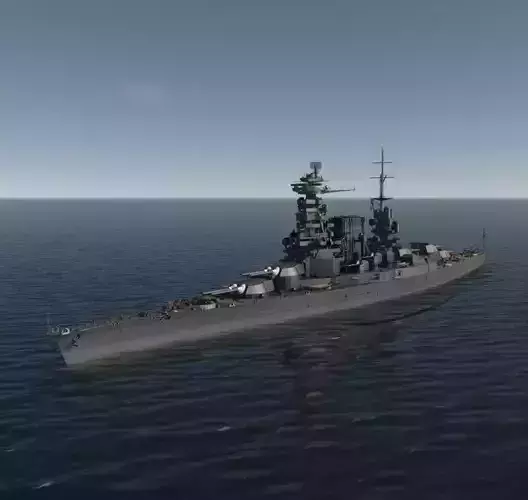1/7
These four battlecruisers were part of the “Eight-eight fleet” program of the early 1920s. They would have been called IJN Amagi, Akagi, Atago, and Takao. Their design was essentially a lengthened Tosa-class, with a thinner armored belt, weaker deck and more power output for 30 knots (56 km/h; 35 mph), while the secondary armament was rearranged. They carried the same main battery of ten 41 cm (16.1 in) as the Tosa class. On papaer they would have been superior to Hood class. Like the Tosa however, Politicians signed the Washington treaty and due to the tonnage capping, all the ships in constructions were to be scrapped, or converted, as was the IJN Akagi. In fact, both Amagi and her sister-ship were intended to be converted as such but the great Kanto earhtquake in 1924 destroyed the Amagi on slip. She was dismlantled and the Kaga, or the Tosa class was chosen instead to create the two-carriers force the admiralty wanted.
design of the Amagi classDesigned by naval chief engineer of the IJN Yuzuru Hiraga, the Amagi class was named B-64 before any formal name was attributed, first drafted in 1919. The hull was flush deck like the Tosa for rigidity, and the bow still had this caracteristic shape. Planned displacement was 41,217 tonnes (40,566 long tons), up to 47,000 t (46,000 long tons) fully loaded. The hull was 250 m (820 ft) long (waterline) 251.8 m (826 ft) overall, making these the largest IJN capital ship ever built before the N°13.
PropulsionIt should be noted that Hiraga evaluated an alternative design fitted with a diesel-electric propulsion (as for the Tosa), following successful tests of the US Navy US Navy Navy. This would have procured only 105,000 hp on paper, less than what was expected to reach the design speed, but a better range of 9600 nm.They had four propeller shafts and Gihon steam turbines, and no less than 19 Kampon boilers with mixed heating, coal (8) and fuel (11). This overall was credited on paper after calculations of a whooping 131,200 shaft horsepower (97,800 kW) enabling the required 30 knots as designed. Fuel stores amounted to 3,900 tons of oil, 2,500 tons of coal, which procured 8,000 nm range at 14 knots.
ArmamentOriginally, the design was to carry 16 in/45, but the naval staff asked it was rearmed with the new 16in/50 in development, which was never ready on time. Nevertheless, with ten 410 mm guns, in five twin turret, two in superimposed pairs fore and aft, and one behind them, with a safe margin, aft of the tripod mainmast. Performances of the guns were the same as the Tosa and Nagato, whereas due to the longer hull, the field of fire was arguably better. The secondary battery of sixteen 5.5 in (140 mm) was only reduced compared to the Tosa, it was the same as the earlier Kongo class. The casemate guns were widely spread on the battery deck, reasonably safe from water splashes even in heavy weather. This battery deck was pushed back compared to previous designs, those forward installed at the level of the bridge. The last pair was between the N°3 turret and aft pair. They all had an excellent arc of fire.The tertiary armament was nothing revolutionary, with four to six (after a revision) 4.7 in/45 AA guns, and eight 24-in tubes (610 mm) above waterline, fixed in the hull, in two broadside pairs fore and aft.
REVIEWS & COMMENTS
accuracy, and usability.







